MuleSoft, Salesforce POST
Take a look at this tutorial for more information on how to create a simple global HTTP connector to receive requests in Salesforce.
Join the DZone community and get the full member experience.
Join For FreeHTTP Config:
MuleSoft has Salesforce connectors that facilitate CRUD operations for Salesforce objects. If you need to get data from Salesforce, take a look at MuleSoft, Salesforce Request.
HTTP Connector:
We are going to create a simple global HTTP connector to receive our requests:
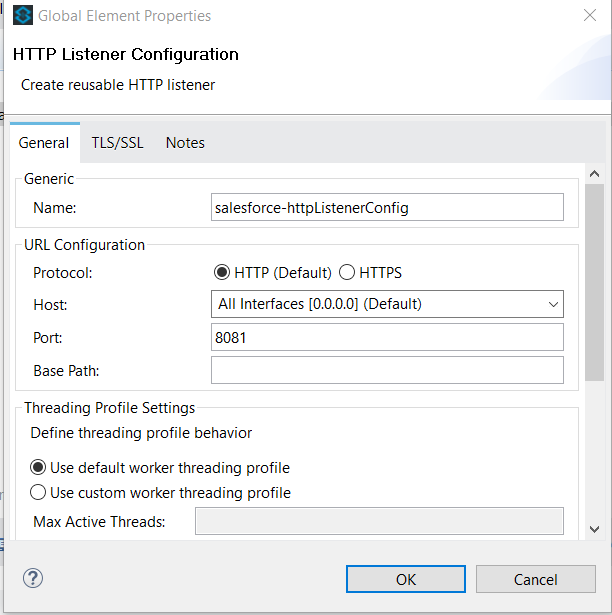
To make the example simple, we are going to create the following flow:
- /contacts POST

HTTP config:

Salesforce Connector:
Drag and drop the Salesforce connector right after the GET HTTP:

Select Salesforce Basic Authentication
Fill out the username, password, and security tokens with Salesforce credentials.
Click validate configurations to check the connection.
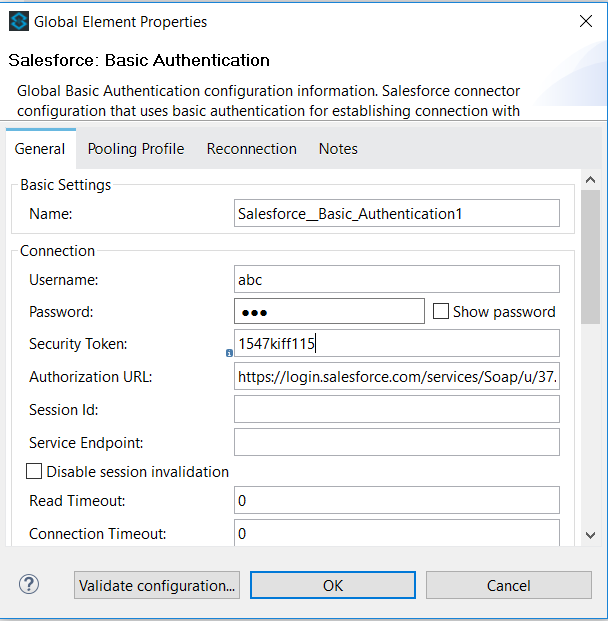
Salesforce Create:
Going back to the Salesforce connector, select Create as Operation.
We are going to create a Contact so select it as sObject type.
Keep the sObject Field Mappings as default. From Expression #[payload]
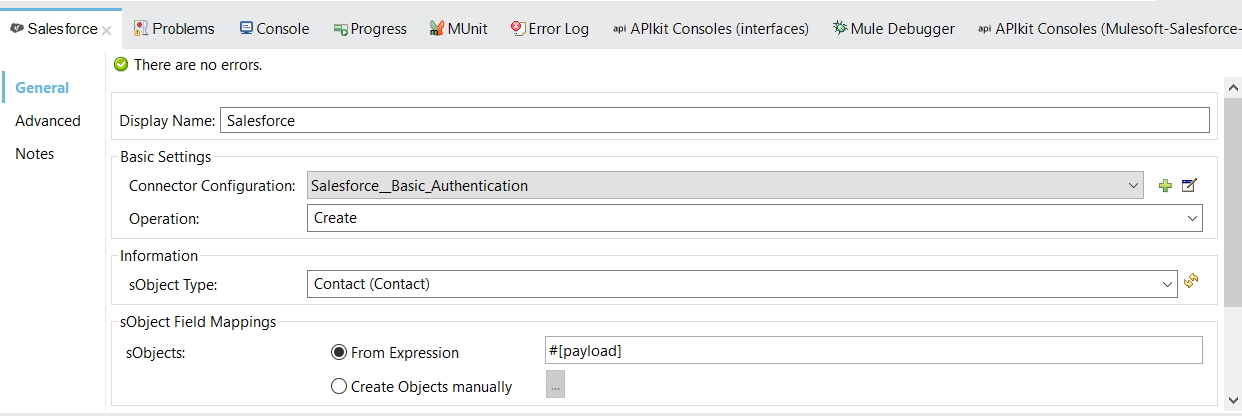
Drag and drop a transformer connector between HTTP and Salesforce. Doing that, you can make use of the data sense to help you to make the transformations.
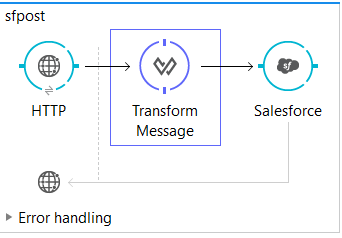

We are going to use the following payload to create a contact:
{
"last_name": "Obama",
"first_name": "Barack",
"cel": "555 6987",
"personal_email": "bo@whitehouse.com"
}The MuleSoft Transformer should look like this:
%dw 1.0
%output application/java
---
[{
LastName: payload.last_name,
FirstName: payload.first_name,
Phone: payload.cel,
Email: payload.personal_email
}]
NOTE: Pay special attention to %output, as it should be application/java
Add another transformer connector after the Salesforce connector. It will be responsible for transforming the resulted Salesforce message into JSON format.
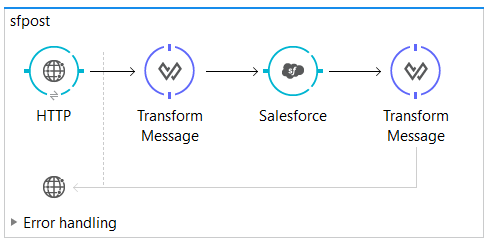
The transform message should look like this:
%dw 1.0
%output application/json
---
{
id: payload[0].id,
success: payload[0].success
}
Creating a Contact
Start the Mule project from Postman, make a post request, and pass the contact JSON as a parameter:
{
"last_name": "Obama",
"first_name": "Barak",
"cel": "555 5555",
"personal_email": "bo@test.com"
}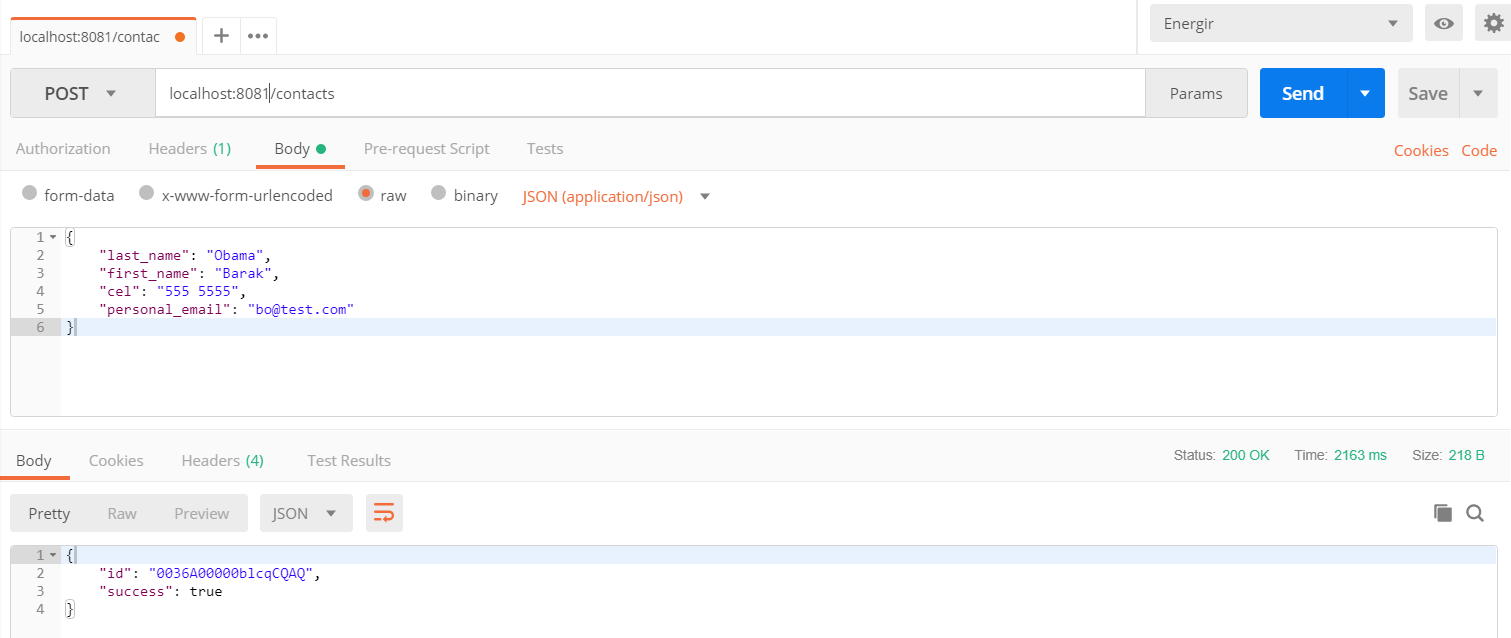
The JSON response should indicate if the contact was properly created.
Opening Salesforce, we can find our created Contact (Barak Obama).

Opinions expressed by DZone contributors are their own.

Comments